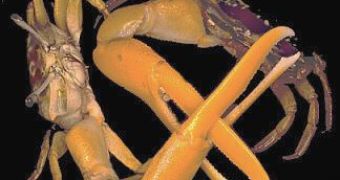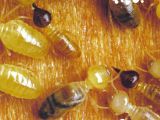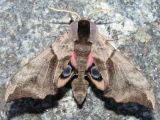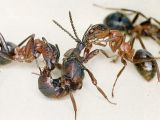Contrary to the common opinion, animals employ violence very rarely, only when they are cornered or mad of fear.
Otherwise, they carefully save their forces, as zoopsychologists noticed.
In a chicken group, just one picks and knocks the others.
Moved in another group, he will manifest the same tendency, becoming soon dominant.
So, a hierarchy is established from early ages.
During a conflict, the dominated individual will expose to the dominant one its most vulnerable zones, like the neck and the abdomen in the case of the wolves.
Faced with this, the aggressiveness of the dominant individual is quickly depressed as the adversary does not oppose any resistance.
In fact, the role of the hierarchy is to reduce the frequency of the fights: skirmishes can start very easy but end very quickly.
Fights inside the same group usually emerge between males in the competition for females.
On fiddler crabs, one of the claws grows enormous, while the other remains small.
They live on the beaches, in the tidal zone, where they dig wholes in which they pass most of the time and are very aggressive between them, females towards other females and males towards other males.
Disputes start though a frenetic dance while they agitate menacing their huge claw.
After that they shake claws like hands, each one trying to break the claw of the other.
The fight can be dramatic, and finally, one of the crabs wins, powerfully tossing its adversary to the ground.
The crab that has lost its claw is chased away merciless by the others, as the small claw is useless.
Usually, the right master of the place and of the females wins, but it's also a question of conjuncture.
Sometimes the so-called "palace revolutions" occur, when the defeated male is not killed but sent in a long exile.
Many fish males during the mating season get brighter, more attractive colors, changing their behavior.
They turn very aggressive, but fights are rare as color is enough to intimidate weaker males.
In birds, the same occurs: males can take dreadful attitudes, with the plumage swollen but after a short reciprocal research, in a cataleptic focused immobility they go in different directions, like in the case of the ruff.
What's the explanation for this absurd behavior?
Inside their territories, males are extremely aggressive and attack any intruder; outside of it, the general rule is flight but at the border of their territory, the combatants hesitate.
In mammals, the social rites are amazingly simple.
In large hoofed beasts, like bulls, all is reduced to a tilt of the head and neck.
In primates, the menace signaling is even more discrete: just a glance, like in gorillas or baboons.
Other method of menacing a rival is olfactive, and while intimidation, found in birds and superior mammals, is regarded as more evolved, the olfactive method characterizes insects and inferior mammals.
Many birds and crickets intimidate by singing.
A cricket male looking for a female emits one type of sounds, while when perceiving a male rival, they "sing" another menacing "song".
Usually, the intruder stops singing and goes away.
The chemical defense weapons, like asphyxiating gases, are employed from skunks to skunk beetles which warn potential predators with vivid colors.
The venom is spread from spiders and insects to snakes and even some mammals, like platypus and some shrew species.
In the case of the Nasutitermes termites, when an intruder enters in the colony, the "soldiers" surround it and flow over it a viscous liquid, immobilizing the intruder that finally dies.
Some fish species employ the electric attack.
The most powerful electric fish is the electric eel from Amazon.
A 2 m (6.6 ft) long individual can produce a discharge of about 600 volts, enough to paralyze a horse.
Animals can also use psychological methods for defense.
The moth Smerinthus ocellata, which appears colored in a simple gray, opens suddenly its rear bright colored wings when a danger approaches.
This unexpected reaction similar to a spectacular metamorphosis usually chases away its adversary.
Till now, there are only two species known in nature that war in a methodical way with the goal of capturing slaves: man and ants.
The ant species Formica sanguinea organizes real expeditions for capturing slaves, which are put to work or to defend their own colony.
They choose another colony which is surrounded and assaulted.
The victims take their pupas in the mandibles trying to flee, but the attackers have already cut their way and impeded them in the case they try to oppose resistance.
After that, the convoy return to their colony with their hostages which are assimilated in their own colony.
After a while, the "slaves" adopt something from the behavior of the winner and later, they take part in the plunder expeditions, when the ants steal the supplies gathered with so much effort by another colony.
There are species that employ more than nature offered to their anatomy for fighting.
Chimps and gorillas employ sticks and stones as projectiles.

 14 DAY TRIAL //
14 DAY TRIAL // 


